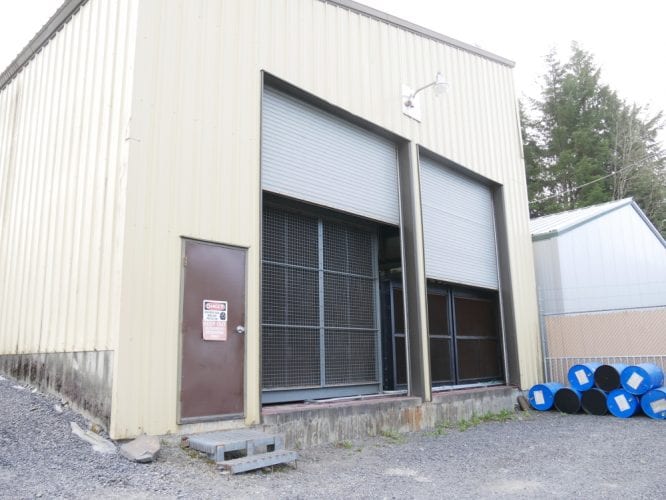
A couple days of rain and some warmer weather have slightly boosted levels of some hydroelectric reservoirs in Southeast Alaska. However, communities continue running diesel generators and are still asking customers to conserve electricity. Those reservoirs are still a long way from refilled.
Diesel generators drone on in downtown Petersburg this month, running around the clock, seven days a week. And the borough’s utility director Karl Hagerman said that’s going to continue.
“I do wanna thank the community for any conservation measures that they’ve put into place in their homes and businesses,” Hagerman said. “It does help. And I just encourage everybody to stay the course for the time being as long as we’re burning diesel fuel any conservation’s going to help the bottom line in the long run.”
The bottom line has improved with a break in the winter weather. Parts of Southeast received several inches of rain in the middle of the month, even breaking some daily rainfall records in places. That was followed by sunny days and record setting warm temperatures.
“With the looks like the onset of spring, things are improving a little bit but still hasn’t really taken off as far as substantial level increases,” he said.
Hagerman’s referring to water levels at Petersburg’s three sources of hydroelectric power, which are improving but are still just above empty. The main source for Petersburg and Wrangell is Tyee Lake on the mainland near Wrangell. The surface of that lake dropped to a low point of 1258.7 feet above sea level earlier this month. As of March 21st it had climbed about four feet, to 1262.7. Still that’s almost 130 feet below a full reservoir. And it’s still just above the minimum allowed by the federal permit for that project, at 1250 feet.
At Swan Lake near Ketchikan, the surface of that reservoir reached a low point of 280 feet of elevation when it was shut down to save water this winter. It has rebounded over six feet but is still not being used for power generation to allow the lake to fill further.
Meanwhile Petersburg’s hydro plant at Crystal Lake on southern Mitkof Island reached a winter low point of just under eight and a half feet above the intake pipe. It has come up almost a foot in the past week.
Hagerman explained the community isn’t quite to the typical time of year when those lakes start to refill in earnest.
“More so in April and May is when we start to see a large amount of inflows from snow melt and rainy weather,” Hagerman said. “And we’re not quite there yet although we’re seeing signs. The lakes are coming up instead of going down. So we’re looking for any silver lining right now.”
Hagerman wants to impress on power customers in Petersburg to continue conservation.
“Any power that we can conserve in our system right now is helping out with our diesel burn, burning less fuel and using less water out of Tyee,” he said. “Both of those things help our situation dramatically. So any conservation that can be done can still be observed and try to help out the situation until further notice.”
The warmer weather has also meant a drop in electrical demand as customers turn down heaters. And for the moment the diesel bill in Petersburg and Wrangell is being covered by the owner of the Swan and Tyee plants, the Southeast Alaska Power Agency. But the SEAPA board meets in a special meeting Thursday, March 28 and will be revisiting reservoir management and diesel generation in the communities.









